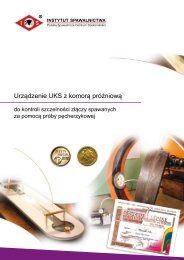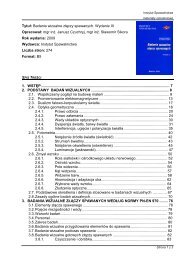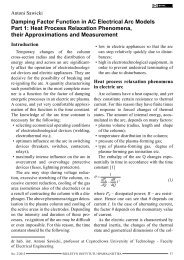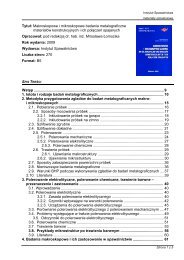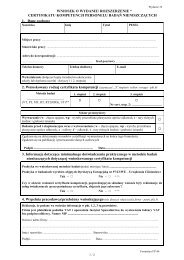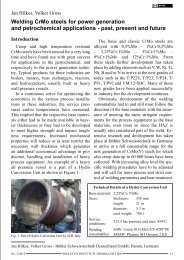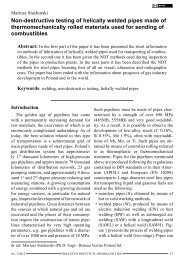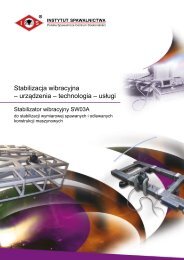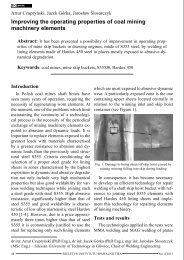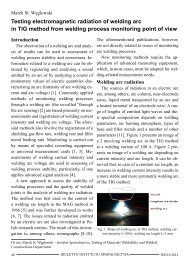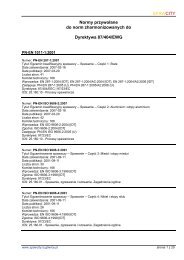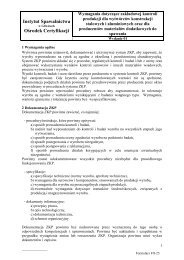Biuletyn Instytutu Spawalnictwa No. 01/2012
Biuletyn Instytutu Spawalnictwa No. 01/2012
Biuletyn Instytutu Spawalnictwa No. 01/2012
Create successful ePaper yourself
Turn your PDF publications into a flip-book with our unique Google optimized e-Paper software.
cess being carried out at a specific rate), the<br />
longer axis of the ellipse is designated as the<br />
dimension S, whereas the shorter one as the<br />
dimension D (Fig. 2,3)<br />
Fig. 2. Scheme of process of laser welding with radiation<br />
beam emitted in pulsed mode<br />
Degree of overlapping of pulses is defined<br />
by the following relation:<br />
[ ]<br />
%<br />
'<br />
S − S<br />
Z = × 100<br />
(7)<br />
S<br />
where:<br />
S = D + v × t (8)<br />
i<br />
S’ = v× T (9)<br />
After transformation of relations 7, 8, 9, the<br />
overlap Z is the following:<br />
⎡ v × T ⎤<br />
Z = ⎢1 − ⎥ ×100%<br />
(10)<br />
⎣ D + v × t i ⎦<br />
Effective penetration depth is conditioned<br />
by the overlap Z (Fig. 3).<br />
Welding with laser radiation beam emitted<br />
in pulsed mode<br />
The miniaturisation in many areas of technique<br />
has almost become a trend, stimulating<br />
the development of micro-machining (including<br />
micro-joining) of various structural materials.<br />
In relation to miniature structural elements<br />
and modules, as well as a variety of<br />
miniature components and devices, today’s<br />
manufacturing techniques and classical joining<br />
technologies in particular meet technical limitations<br />
preventing the efficient use of the former.<br />
In many applications the only solution is<br />
the laser, regarded as one of the most innovative<br />
tools of modern industry.<br />
Operating a laser in pulsed mode enables<br />
the precise production of welded joints of elements<br />
made of technologically advanced materials<br />
and having minute dimensions. A joint of<br />
this type is obtained through the melting of a<br />
very small amount of metal by a single pulse of<br />
a laser beam and its immediate crystallisation.<br />
A continuous weld is formed as a result of the<br />
proper selection of welding rate and pulse repetition<br />
frequency.<br />
Pulsed laser welding is applied where one<br />
needs to join ready-made electronic components<br />
in a tight housing, thin-walled elements<br />
(membranes) with massive cases, thin-walled<br />
housings, medical equipment elements (housings<br />
of cardiac pacemakers, endoscopes, medical<br />
implants, surgical instruments and others).<br />
Fig. 3. Graphic interpretation of overlap of pulses of laser radiation beam: v – welding rate,<br />
t i<br />
– pulse duration, D – diameter of area of focusing of radiation beam, T – pulse period [1,3]<br />
NR <strong>01</strong>/2<strong>01</strong>2<br />
BIULETYN INSTYTUTU SPAWALNICTWA<br />
7



